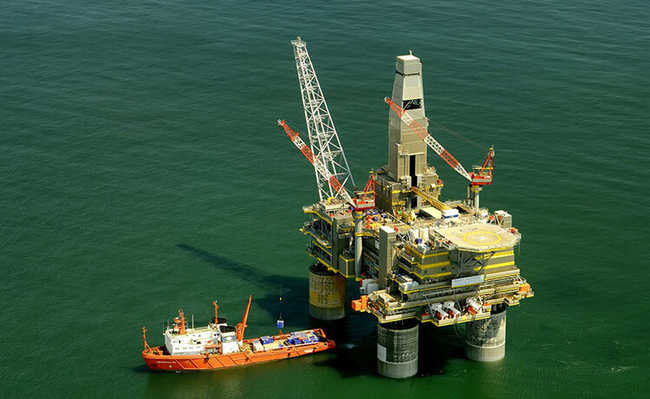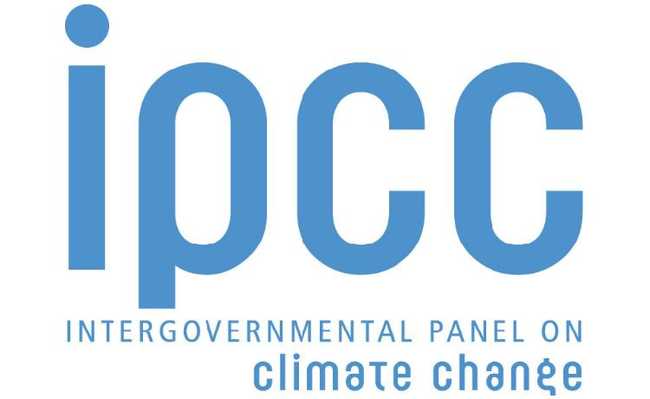What is oil?
Oil is a substance found in specific sedimentary basins, formed by layers or porous sheets of sand, sandstone or limestone

David Mark image by Pixabay
Oil is a mixture of carbon and hydrogen molecules that originates from the decomposition of organic matter, mainly plankton, formed through the action of bacteria in environments with little oxygen. Over millions of years, this material accumulated on the bottom of oceans, seas and lakes and, when pressed by the movements of the earth's crust, gave rise to the substance we call petroleum.
This material is found in specific sedimentary basins, formed by layers or porous sheets of sand, sandstone or limestone. Petroleum is classified as a fossil fuel, as it originates from the slow decomposition of organic matter. Currently, oil is the most used fossil fuel. This happens because its refinement originates several fractions or mixtures of organic compounds with close amounts of carbon, composing petroleum derivatives.
However, oil is a non-renewable energy source. This means that it is an energy source that is depleted in nature. Furthermore, this energy of organic origin is limited and takes millions of years to form in nature. Therefore, its extraction and use were and still are targets of conflicts involving powers and producing countries and refiners.
Chemical composition of petroleum
Oil is composed largely of carbon and hydrogen molecules known as hydrocarbons. These compounds make up most of the petroleum, although other substances are part of its constitution.
In the chemical composition of petroleum, nitrogen, oxygen, salts and residues of some metals are also found in smaller amounts. The proportion of the elements that make it up is as follows:
- 82% carbon;
- 12% hydrogen;
- 4% nitrogen;
- 1% oxygen;
- 1% of salts and metal residues.
Oil characteristics
The main characteristics of oil are:
- Oiliness;
- Viscosity
- Characteristic odor;
- Coloring that can range from colorless to black;
- Flammability;
- Density less than water.
Oil reserves and production
According to data from Central Intelligence Agency (Central Intelligence Agency, in free translation), Venezuela is the country with the largest oil reserves in the world, with 300.9 billion barrels. The second is Saudi Arabia, with 266.5 billion barrels. Brazil appears in 15th in the ranking, with 12.7 billion barrels of the substance. Check out the list of countries with the largest oil reserves in the world:
| Position | Parents | Barrels (in millions) |
|---|---|---|
| 1° | Venezuela | 300,9 |
| 2° | Saudi Arabia | 266,5 |
| 3° | Canada | 169,7 |
| 4° | Will | 158,4 |
| 5° | Iraq | 142,5 |
| 6° | Kuwait | 101,5 |
| 7° | United Arab Emirates | 97,8 |
| 8° | Russia | 80 |
| 9° | Libya | 48,4 |
| 10° | Nigeria | 37,1 |
| 11° | U.S | 36,5 |
| 12° | Kazakhstan | 30 |
| 13° | China | 25,6 |
| 14° | Qatar | 25,2 |
| 15° | Brazil | 12,7 |
General information about oil
Although known since the dawn of human civilization, the exploration of fields and the drilling of oil wells only began in the mid-nineteenth century. Since then, the oil industry has undergone great expansion, mainly in the United States and Europe.
Despite the strong competition with coal and other fuels considered noble at the time, oil began to be used on a large scale, especially after the invention of gasoline and diesel engines. For many decades, oil was the great driving force of the international economy, coming to represent, in the early 1970s, almost 50% of the world consumption of primary energy. Although declining over time, its share of this consumption still represents about 39%, according to the International Energy Agency.
In addition to being predominant in the transport sector, petroleum derivatives are also responsible for generating electricity in several countries around the world. It is possible to generate electricity from burning these derivatives in boilers, turbines and internal combustion engines. Petroleum products commonly used for this purpose are fuel oil, ultra-viscous oil, diesel oil and refinery gas.
Petroleum derivatives constitute a significant part of the energy matrix in countries such as the United States, Japan, Mexico, Saudi Arabia, Italy and China. In Brazil, the generation of electricity from petroleum derivatives is not so expressive due to the history of predominance of hydropower. However, there are thermoelectric plants that produce electricity from petroleum products to meet peaks in the electrical system, being used mainly to supply the demand of communities not served by the interconnected electricity system.
oil refining
In refineries, oil goes through different processes until the desired quality for a given purpose is obtained. Oil refining takes place through the following steps:
Separation
The separation processes aim to remove specific components of the oil, or "break" the oil down to its basic fractions. These are physical changes, in which actions of energy (modification of temperature or pressure) or mass (relationships of solubility to solvents) are necessary.
Distillation is one of the steps in this separation process. It is through it that the oil is vaporized and then condensed by actions of temperature and pressure. This process aims to obtain fuel gas, liquefied gas, naphtha, kerosene, diesel (atmospheric and vacuum) and vacuum residue. Product yield varies depending on the crude oil that has been processed.
Conversion
Conversion processes are used to change the chemical composition of a specific fraction of petroleum, in search of quality improvements, as in the case of transforming diesel and waste into naphtha, kerosene or diesel. This step comprises the cracking, alkylation and catalytic reforming procedures, and it varies according to the crude oil and the derivative that one wants to obtain.
Treatment
The treatment process seeks to remove impurities existing in petroleum, such as sulfur, nitrogen, metals and other components that cause undesirable effects to the derivatives. The improvement of treatment techniques makes it possible to mitigate the impacts caused by the emission of gases into the atmosphere.
electric power generation
The production of electric energy from petroleum derivatives begins with the process of burning the material in a combustion chamber. The heat obtained is used to heat and increase the pressure of the water, transforming it into steam, which in turn will move the turbines, transforming thermal energy into mechanical energy. The movement of the turbines puts into operation a generator, which transforms mechanical energy into electrical energy. The steam is then redirected to a condenser, where it will be cooled to return to a liquid state and be used as water by the boiler system.
The pollutants contained in petroleum derivatives are emitted to the atmosphere during the combustion and cooling stages, so that the volume and type of gas emitted vary according to the composition of the fuel burned and the conditions of dispersion of the pollutants. The denser the fuel, the greater the potential for emissions - this is one of the reasons why diesel and ultra-viscous oils are considered byproducts with a high potential for pollution. Recently, efforts have been applied to improve energy conversion technologies, to improve the efficiency of systems and also to capture polluting gases.
Socio-environmental impacts of oil
The main impacts of electric energy generation from petroleum derivatives result from the emission of pollutants into the atmosphere, mainly the so-called greenhouse gases. The accumulation of high concentrations of greenhouse gases in the atmosphere blocks the heat emitted by the sun and traps it on the earth's surface, intensifying global warming.
The main consequence of the intensification of global warming is the melting of glaciers and polar ice caps, a phenomenon responsible for causing the rise in sea levels and the flooding of coastal areas. This process affects large numbers of people and wild animals and alters the biodiversity of these regions.
- 'Climate apartheid' could push more than 120 million people into poverty
Among other atmospheric pollutants resulting from the burning of petroleum derivatives, sulfur dioxide (SO2) and the so-called particulate matter, consisting of dust and ash in suspension, stand out. In addition to changes in local biodiversity, these pollutants cause several problems to human health, such as respiratory disorders, allergies, degenerative lesions in the nervous system and vital organs, cancer. These disturbances tend to worsen in winter, when thermal inversions cause the trapping of hot air and make it difficult for pollutants to disperse.
Furthermore, oil can be released into the environment as a result of a series of events, such as accidents with oil tankers, on oil platforms and the release of water used to wash tanks where the oil is stored. When spilled into the environment, oil triggers several damages to ecosystems, causing chemical and physical changes in the environment, in addition to harming life in the area.
In the marine environment, oil prevents the passage of light, which harms photosynthetic organisms such as phytoplankton. With the reduction of phytoplankton, zooplankton, which feed on these organisms, end up having their food reserve reduced. In this way, oil negatively affects the entire food chain.
Mangroves can also suffer from this pollution. In these ecosystems, oil reaches the plant's root system, preventing them from absorbing nutrients and oxygen. In addition, animals that use the region to reproduce can also be affected, as is the case of crabs and several other species.
Aquatic animals can die as a result of an oil spill. They can become intoxicated with the substance, die from suffocation or even because they got trapped in the oil. This type of intoxication compromises the nervous and excretory systems of these animals. The pollution of the environment by oil also causes direct damage to human beings, affecting tourism and fishing activities in the region.










